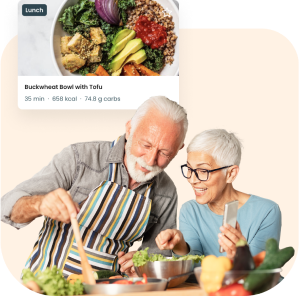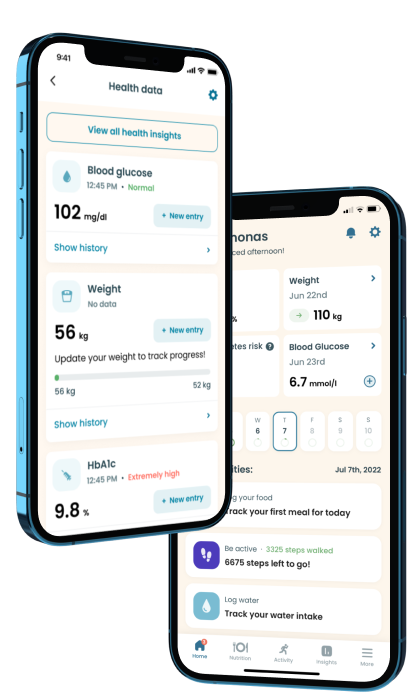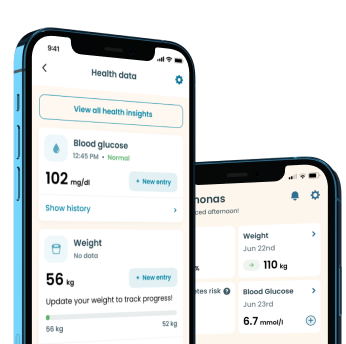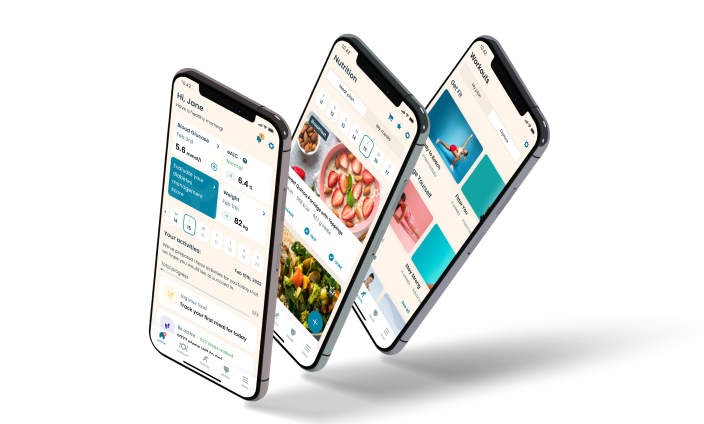Lunch for Diabetes

Due to the high number of calories that we burn, especially in the afternoon, lunches are made to be heavy, high-energy meals. For diabetics, the case is different since they are at a high risk of blood sugar spikes following each meal. So what’s the way out? Although exercising after a heavy meal is an option, not everyone has this luxury.
For this reason, several methods have been devised to aid the safe consumption of lunch in diabetics, with most centered around diet adjustment. This article highlights certain factors that aid the selection of the perfect lunch for diabetes, as well as recommended food ideas.
Guidelines for Choosing the Ideal Diabetic Lunch
In most cases, many diabetics are not well informed on the safe proportions of food/lunch to consume. While it’s paramount that you always seek a doctor’s advice before making changes to your diet, certain factors can guide your selection process, as we’ll observe below.
Low Amounts of Carbs
It’s a no-brainer that carbs are essential for energy. However, when taken in excess via heavy meals/lunches, your blood sugar can rise to critical levels.
On the contrary, research proves that a low-carb eating plan may improve blood sugar levels and potentially reduce antihyperglycemic drug usage in type 2 diabetes patients. This explains why the majority of diabetes lunch plans feature a low-carb content.
Low Glycemic Index (GI)
The GI is a major determinant of postprandial blood glucose spikes. In a 2018 meta-analysis from the Nutrients journal, a low-GI diet (with a score of 0–20) yielded reduced glycated hemoglobin (HbA1c) and fasting blood glucose levels than high-GI meals. While this review has certain limitations, like a limited number of studies and minimal sample sizes, the observed findings are consistent across most studies.
Healthy Amounts of Fats
Although fats are generally considered to promote weight gain, not all types of fat are harmful. Namely, healthy fats (such as monounsaturated fatty acids [MUFA]) are proven to have beneficial anti-diabetic effects.
In a Diabetes Care meta-analysis covering 24 studies and 1,460 subjects, a high MUFA-diet offered considerable declines in triglycerides, fasting plasma glucose, systolic blood pressure, and body weight compared to a high-carb meal. Conversely, high-MUFA meals provide increased amounts of HDL (high-density lipoprotein) cholesterol — beneficial for avoiding diabetes complications like heart diseases.
Compared to meals with a high polyunsaturated fatty acid (PUFA)-content, MUFA-dense meals yielded massive reductions in fasting plasma glucose. Hence, when selecting lunch meal plans, it’s better to stick to high MUFA-foods (like avocados, nuts, olive, and canola oil) while minimizing high-carb intake.
High Amount of Dietary Fiber
High-fiber meals can counter the effects of carbs and sugar on blood glucose. They slow down glucose absorption from the gastrointestinal tract (GIT), thereby avoiding blood sugar spikes.
In a six-week research conducted on 13 type 2 diabetes patients, high dietary fiber intake (50 g)—higher than the ADA-recommended 24 g—decreases hyperinsulinemia, slashes plasma lipid concentration, and improves glycemic control. The findings include a 10.2% decrease in triglycerides, a 6.7% decline in total cholesterol, and a 12.5% reduction in very-low-density (VLDL) lipoprotein.
Take a quiz
Discover what Klinio app can do for you
Healthy diabetes meal plan crafted just for YOU

Personalized workouts with no equipment needed

Track your progress with smart tracking tools

Thanks to the continuous efforts of dieticians and health specialists, various “lunch for diabetes” ideas/recipes/combos are now a thing. Here are some of them that you can safely combine to obtain diabetes-friendly meals;
- Healthy lunch carbs: Sweet potatoes, quinoa, whole fruits ( not fruit juice), black beans, and lentils.
- Healthy lunch proteins: Tuna, tofu, low-fat dairy products, turkey, and tempeh.
- Healthy lunch fats: Avocado, peanut butter, olives, salmon, and almonds.
For optimal results, you can consult with your dietician on how you can best combine these foods.
When it comes to selecting the ideal diabetes-safe lunch, people with diabetes are not restricted in their food options. However, fried foods, cream soups, sugary drinks (such as soda, sweet tea, or juice), alcoholic beverages, white bread, rice, refined pasta, and meals with added sugars should be avoided.
Yet, it would be best if you didn’t make your food choices on your own. It’s advised you seek the advice of a certified dietician to enable you to draw up the perfect diabetes lunch plan for you.

Download Klinio app!
Get more by downloading our free Klinio App. Analyze your health, form new habits and manage your diabetes anytime, anywhere.
OR
SCAN QR CODE



GET THE APP


